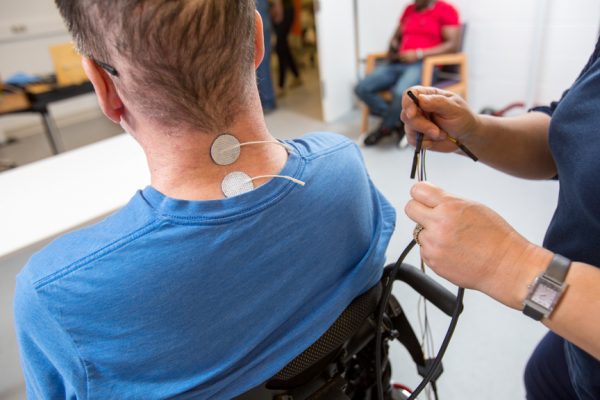
Transcutaneous electrical stimulation is a novel, non-invasive strategy to modulate spinal circuitry. Utilization of a unique waveform permits high-current electrical stimulation to reach spinal networks over the skin without causing discomfort. We are testing the immediate and lasting effects of this potentially break-through treatment for restoring upper extremity function in tetraplegics.
Reorganization of spared spinal circuits and facilitation of weak or functionally silent descending drive are important targets for improvement of sensory and motor function after spinal cord injury. Enhancement of spinal networks’ excitability via tonic electrical spinal cord stimulation can leverage the intrinsic capacity of neural plasticity and can be utilized for functional recovery.
In this study, we are evaluating the effect of cervical transcutaneous spinal cord stimulation combined with physical and occupational therapy. The physical and occupational therapy program includes standard stretching, active assistive range of motion exercises, and intensive gross and fine motor skill trainings, which resemble most of the daily upper extremity motor tasks.
Our preliminary results showed that non-invasive electrical cervical spinal cord stimulation confers an immediate benefit on hand and arm function when the stimulator is active. More excitingly, we observed durable functional improvements that provide evidence for engineered neuroplasticity.
Overview videos of our recent study
Videos from our 2021 study demonstrating improved hand function and reduced spasticity
Results from our 2018 study
| Study Contact Fatma Inanici MD PhD finanici@uw.edu |
 |
|---|
